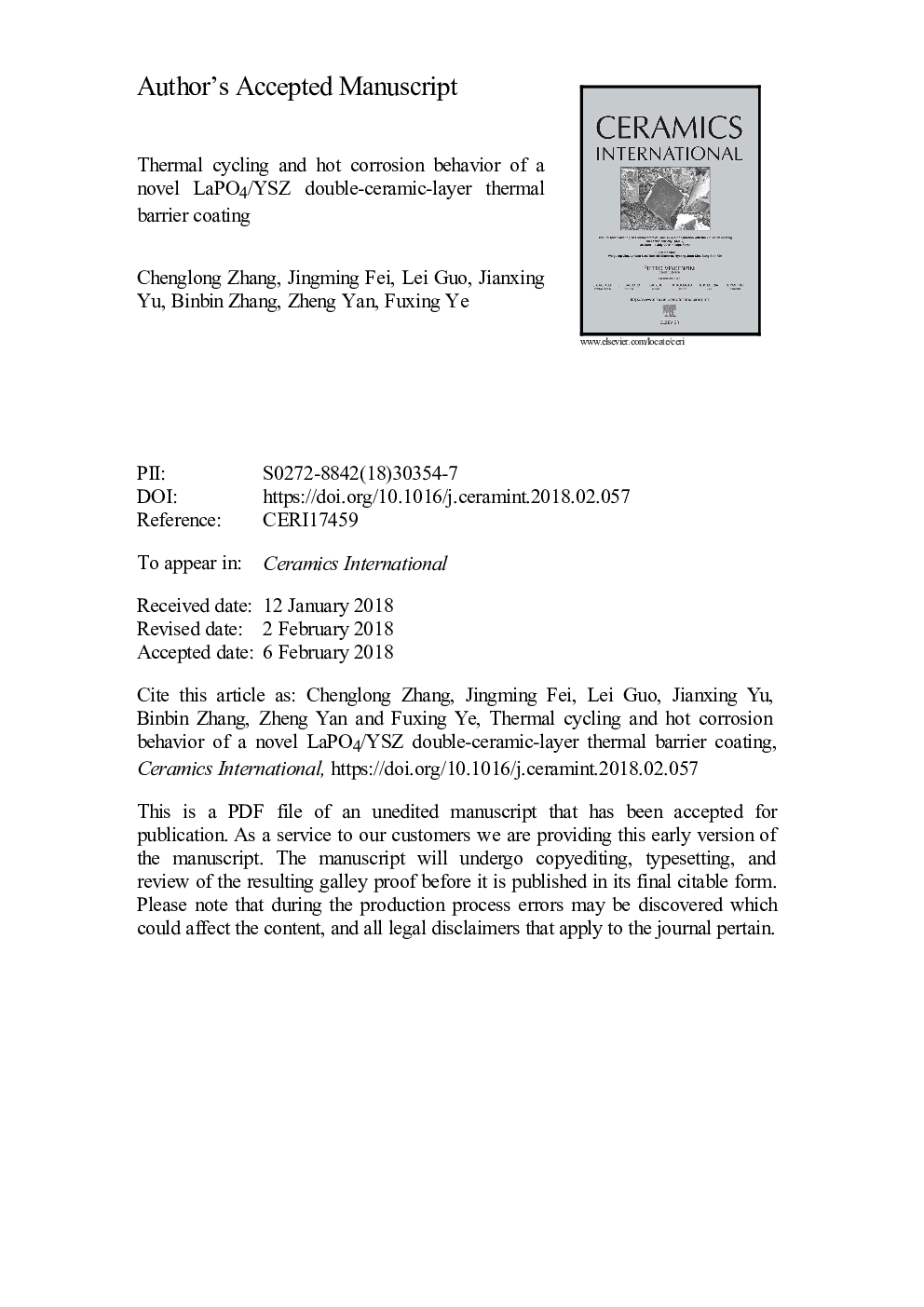| Article ID | Journal | Published Year | Pages | File Type |
|---|---|---|---|---|
| 7887353 | Ceramics International | 2018 | 41 Pages |
Abstract
LaPO4 powders were produced by a chemical co-precipitation and calcination method. The ceramic exhibited a monazite structure, kept phase stability at 1400â¯Â°C for 100â¯h, and had low thermal conductivity (~ 1.41â¯W/mâ¯K, 1000â¯Â°C). LaPO4/Y2O3 partially stabilized ZrO2 (LaPO4/YSZ) double-ceramic-layer (DCL) thermal barrier coatings (TBCs) were fabricated by air plasma spray. The LaPO4 coating contained many nanozones. Thermal cycling tests indicated that the spallation of LaPO4/YSZ DCL TBCs initially occurred in the LaPO4 coating. The failure mode was similar to those of many newly developed TBCs, probably due to the low toughness of the ceramics. LaPO4/YSZ DCL TBCs were highly resistant to V2O5 corrosion. Exposed to V2O5 at 700-900â¯Â°C for 4â¯h, La(P,V)O4 formed as the corrosion product, which had little detrimental effect on the coating microstructure. At 1000â¯Â°C for 4â¯h, a minor amount of LaVO4 was generated.
Keywords
Related Topics
Physical Sciences and Engineering
Materials Science
Ceramics and Composites
Authors
Chenglong Zhang, Jingming Fei, Lei Guo, Jianxing Yu, Binbin Zhang, Zheng Yan, Fuxing Ye,
